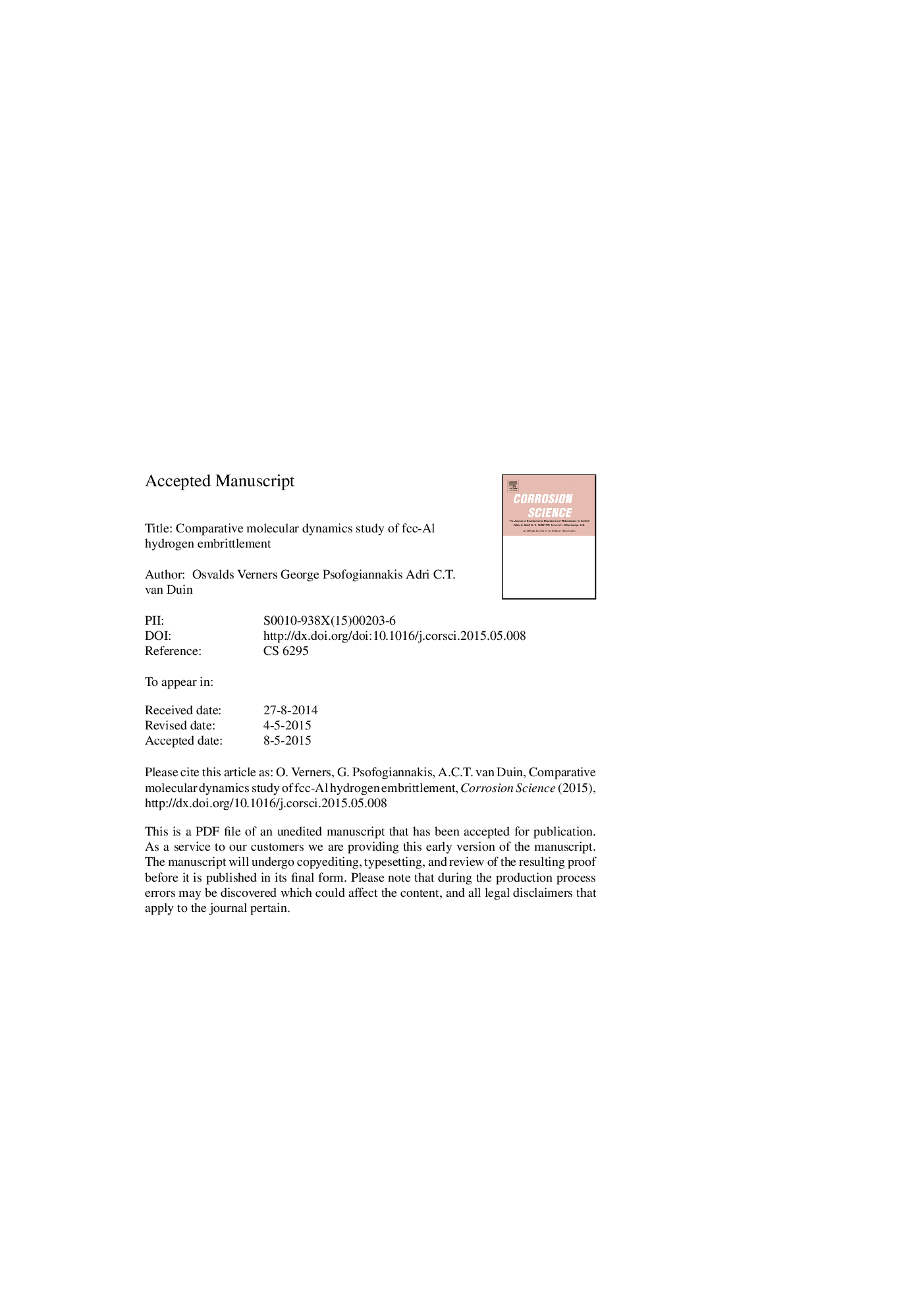| Article ID | Journal | Published Year | Pages | File Type |
|---|---|---|---|---|
| 7895153 | Corrosion Science | 2015 | 22 Pages |
Abstract
Hydrogen embrittlement studies using reactive molecular dynamics have been conducted for Al metal nanoslabs with oxidized surfaces. These have provided evidence for possible grain boundary decohesion and void formation related range of hydrogen embrittlement mechanisms at different loading conditions with different initial defect configurations. Particularly, the effect of initial vacancy concentration on hydrogen diffusivity and localization, as well as on the amount of plasticity and grain formation is estimated. The results indicate significant reduction in diffusivity due to vacancy concentration, as well as hydrogen embrittlement effect through increase in dislocation emission and increase in dislocation slip propagation rate.
Related Topics
Physical Sciences and Engineering
Materials Science
Ceramics and Composites
Authors
Osvalds Verners, George Psofogiannakis, Adri C.T. van Duin,
